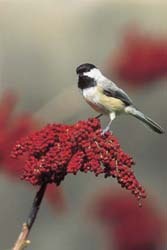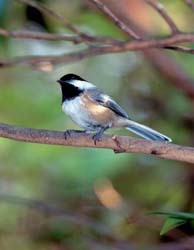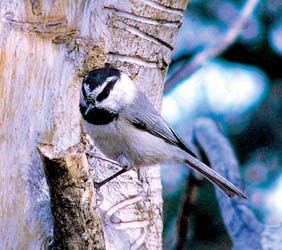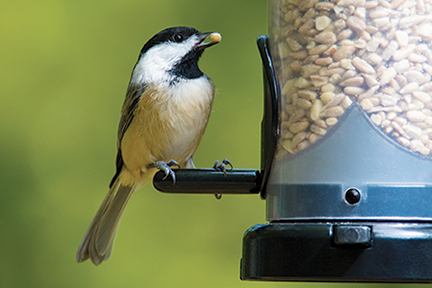Chickadees - Nature’s Backyard Charmer
 Chickadees are among the most beloved backyard birds, known for their boundless energy, cheerful curiosity, and signature “chick-a-dee” call. Found across much of North America’s wooded regions, these tiny birds—especially the Black-capped, Carolina, and Mountain Chickadees—bring charm and activity to every feeder they visit.
Chickadees are among the most beloved backyard birds, known for their boundless energy, cheerful curiosity, and signature “chick-a-dee” call. Found across much of North America’s wooded regions, these tiny birds—especially the Black-capped, Carolina, and Mountain Chickadees—bring charm and activity to every feeder they visit.
Remarkable Traits and Behavior
- Chickadees weigh less than half an ounce but display impressive toughness for their size.
- They are monogamous and usually mate for life.
- Chestnut-backed and Black-capped Chickadees watch other birds’ foraging habits and adjust their own strategies for better success.
- Mountain Chickadees can locate seeds they stored months earlier, demonstrating remarkable memory.
- Boreal Chickadees often hide their food on the underside of branches, protected from snow.
- These birds are cavity nesters—excavating their own sites in soft wood or using old woodpecker holes and nesting boxes lined with moss.
- They typically lay 6–8 white eggs with light brown speckles, which hatch in about 12 days; fledging occurs around 3 weeks later.
- Chickadees’ wings beat roughly 27 times per second—fast, though still slower than a hummingbird’s 80 beats per second.
Feeding and Survival
- Though frequent feeder visitors, more than 75% of a chickadee’s winter diet still comes from natural sources like insects and seeds.
- When temperatures drop below 10°F, studies show chickadees with access to feeders nearly double their survival rate (69% vs. 37% for those without).
- They adapt to freezing nights by lowering body temperature to conserve energy—an amazing form of regulated hypothermia.
- Chickadees can gain up to 10% of their body weight each day and burn it off overnight to stay warm.
- They do not migrate, enduring winter by caching food, growing dense coats, and seeking well-insulated roosting cavities.
- Favorite foods include sunflower seeds, suet, mealworms, and even bits of coconut.
Fun Facts About Chickadees
- Only about 20% of a Black-capped Chickadee’s daily food intake comes from feeders; the rest is insects and natural matter such as spiders or larvae.
- The Black-capped sings a “fee-bee” call, while the Carolina’s version is “fee-bee fee-bay.” These songs are learned and can cross between species in overlapping territories.
- During cold weather, chickadees may need up to twenty times more food than they do in summer.
- The oldest known Black-capped Chickadee lived 12 years and 5 months; Carolina and Mountain Chickadees have each been recorded living over 10 years in the wild.
- The Black-capped Chickadee is the state bird of both Massachusetts and Maine.

